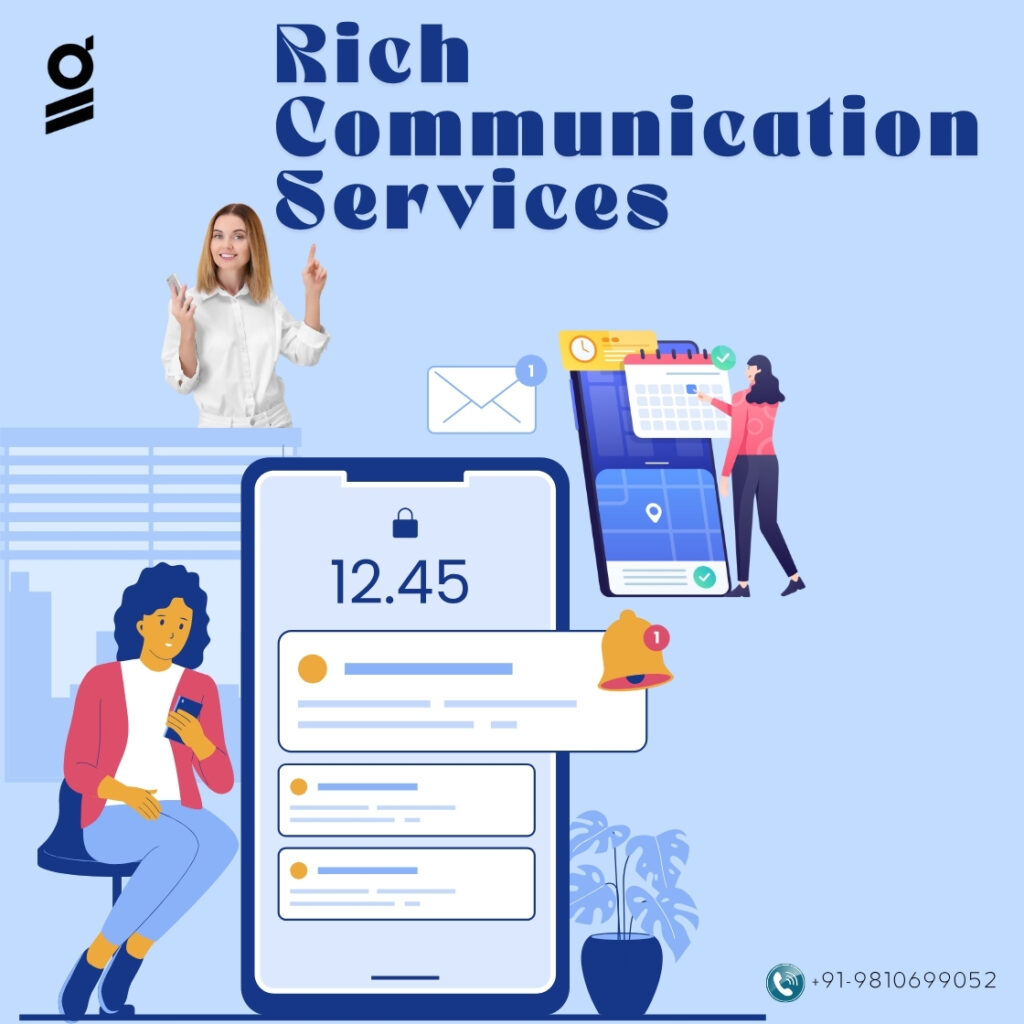As the digital customer journey becomes increasingly mobile-first, brands are looking for communication tools that go beyond the limitations of traditional SMS. Rich Communication Services (RCS) Business Messaging is one such innovation that is transforming how businesses interact with their customers — offering an interactive, visual, and more secure alternative to legacy text messaging.
This article explores how businesses are leveraging RCS to create engaging, personalized experiences directly within a user’s default messaging app.
What Is RCS Business Messaging?
RCS Business Messaging (RBM) refers to the use of RCS by verified companies to send messages that include not just text, but also multimedia content, buttons, and other interactive features. Unlike SMS, which is purely text-based and lacks branding, RCS enables:
- Brand verification (with name, logo, and color theme)
- Rich media content (images, carousels, videos)
- Interactive buttons (suggested replies or actions)
- Real-time status indicators (delivered, read, typing)
RCS offers an experience similar to that of messaging apps like Facebook Messenger, iMessage, or WhatsApp — but within the native Android Messages app, with no extra downloads required.
Key Features of RCS Business Messaging
- Verified Sender Identity: Businesses are authenticated by carriers or messaging providers, giving users confidence in the sender’s legitimacy.
- Interactive CTAs: Buttons like “Buy Now,” “Track Package,” or “Get Directions” let users take action without typing.
- Rich Media: High-quality images, videos, and even live maps can be included for a more immersive experience.
- Personalization: Messages can be tailored based on user behavior, location, or transaction history.
- Two-Way Communication: RCS supports real-time, conversational messaging between customers and brands.
How Top Brands Are Using RCS
- Retail: A fashion brand can send a message with a carousel of new arrivals and a “Shop Now” button. Customers can browse within the message and complete purchases on the spot.
- Banking: Banks use RCS to notify users of suspicious activity with options like “Call Support” or “Verify Transaction” in one tap.
- Airlines: Travel companies send mobile boarding passes, check-in reminders, and flight status updates — all within a branded message thread.
- Healthcare: Clinics and hospitals use RCS to schedule appointments, send vaccine reminders, and provide health tips using visual layouts.
- Food Delivery: Restaurants and delivery services allow users to reorder with a tap, track their driver’s location in real-time, or apply discount coupons directly from messages.
Advantages Over SMS and OTT Apps
|
Feature |
SMS | WhatsApp / Messenger | RCS |
| Branding |
❌ |
✅ |
✅ |
| Rich Media |
Limited |
✅ |
✅ |
| Verified Sender |
❌ |
✅ |
✅ |
| App Required |
No |
Yes |
No |
|
Data Usage |
Low |
Medium |
Medium |
| Opt-In Complexity |
Simple |
Moderate |
Simple |
|
Delivery Reporting |
Limited |
✅ |
✅ |
RCS combines the universality of SMS with the richness of apps like WhatsApp, offering businesses a native, powerful solution for customer communication.
Implementation: How to Get Started
- Work with an RCS Messaging Partner: Brands must go through verified platforms or aggregators (e.g., Google Jibe, Twilio, Gupshup) to access RCS capabilities.
- Verify Your Brand: Submit business details and assets for verification to create a trusted profile.
- Build Message Flows: Use templates and scripts to create conversational flows for different user actions.
- Test and Deploy: Run pilot campaigns, measure engagement, and scale as needed.
Google and mobile carriers usually oversee the approval process and ensure compliance with standards.
Metrics and Measurement
RCS allows for detailed campaign performance analytics, including:
- Message delivered/read rates
- Click-through rates on CTAs
- User interaction time
- Drop-off points in conversations
These insights help marketers refine their messaging strategy and boost campaign ROI.
Challenges to Consider
- Limited iOS Support: RCS is currently Android-only. Messages to iPhone users fall back to SMS.
- Global Rollout Still Incomplete: Not all regions or carriers fully support RCS, although coverage is growing rapidly.
- User Awareness: Some users are unaware RCS is available or haven’t enabled chat features in their settings.
- Security: End-to-end encryption is still being improved across RCS implementations.
Despite these limitations, the widespread Android user base and increasing carrier support make RCS a valuable channel for future-ready businesses.
The Road Ahead
With continued backing from Google and telecom giants, RCS is expected to become a default communication channel on Android devices. Google has already announced end-to-end encryption for one-on-one chats and continues to expand RCS capabilities in business messaging.
As customer expectations shift toward conversational and personalized interactions, brands that adopt RCS early are likely to stand out and gain a competitive edge.
Conclusion
RCS Business Messaging is not just a better version of SMS — it’s a leap forward in mobile engagement. With rich visuals, branded messages, actionable buttons, and two-way communication, RCS gives businesses the tools to offer meaningful, app-like interactions without ever leaving the messaging app.
For brands looking to innovate and connect with mobile-first customers in a direct and engaging way, RCS is quickly becoming the future of business messaging.


